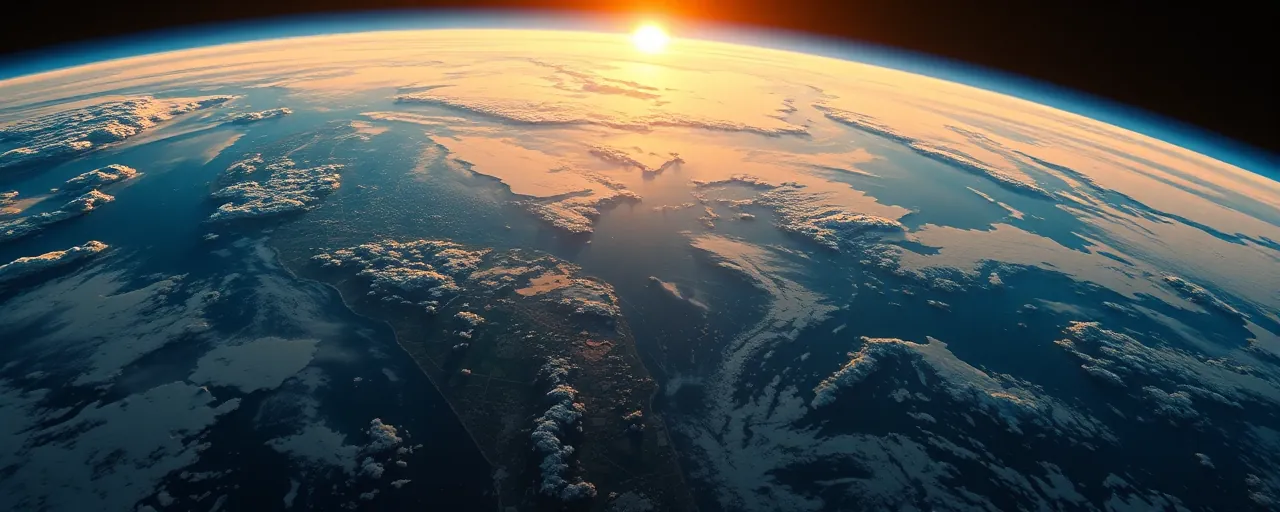A Half-Century of American Ingenuity
This year, the National Oceanic and Atmospheric Administration celebrates 50 years of its Geostationary Operational Environmental Satellite program, better known as GOES. Since 1975, these orbiting sentinels have stood watch over the Western Hemisphere, delivering real-time data that keeps Americans safe from hurricanes, wildfires, and even solar storms. It’s a milestone that demands attention, not just for the tech wizardry, but for what it says about government doing something right. While bureaucrats often fumble, NOAA’s partnership with NASA proves that targeted public investment can yield results that private enterprise alone might not chase.
Let’s be real: the GOES program isn’t some feel-good science project. It’s a lifeline. From the rudimentary GOES-1, which gave forecasters their first glimpse of storms brewing over the Atlantic, to the high-tech GOES-19 now operational as GOES East, these satellites have evolved into a powerhouse of national security. They’ve tracked killers like Hurricane David in 1979 and Maria in 2017, saving lives and property with warnings that hit before disaster does. This isn’t theory; it’s hard evidence of what happens when America commits to practical innovation.
Storms Don’t Wait, and Neither Should We
Take hurricanes. Before GOES, we were guessing where these monsters would land. Now, with tools like the Advanced Baseline Imager on GOES-16, forecasters nail storm intensity and paths with precision that was unthinkable decades ago. Just last year, during Hurricane Helene’s Category 4 rampage, NOAA’s satellites gave coastal towns critical lead time to brace or bolt. The 2025 Atlantic season’s forecast, 125% above average with nine hurricanes looming, only underscores the stakes. GOES doesn’t just watch the weather; it hands us the reins to fight back.
Then there’s fire. California’s 2018 Camp Fire was a beast, but GOES-16 tracked its spread when smoke blinded ground crews. Firefighters got real-time updates, dodging death traps and hitting hot spots fast. This isn’t about coddling tree-huggers; it’s about protecting homes, jobs, and lives. Critics might whine about government overreach, but when flames are at your door, you don’t care who’s funding the satellite. You just want it to work. And it does.
Space Weather: The Silent Threat We Can’t Ignore
It’s not just Earth-bound chaos GOES handles. Solar storms can fry power grids and knock out GPS, costing billions daily. GOES-19’s new Compact Coronagraph spots coronal mass ejections in real time, giving us a heads-up before the lights flicker. Remember 2022? A G2-class storm trashed 39 SpaceX satellites because atmospheric drag spiked. GOES data cuts those risks, shielding the infrastructure we rely on. This is national defense, plain and simple, and it’s a job the private sector isn’t rushing to tackle.
Some argue we ought to leave space to the Elon Musks of the world. Fair point, but Musk’s Starlink isn’t built to predict geomagnetic storms, it’s just a victim of them. GOES fills a gap that market incentives don’t touch, proving that strategic government action isn’t socialism, it’s common sense. When a G4-class storm hit earlier this year, NOAA’s early warning kept airlines flying and grids humming. That’s not bureaucracy; that’s backbone.
The Future Isn’t Free, But It’s Worth It
Looking ahead, the Geostationary Extended Observations program, or GeoXO, is set to launch in the 2030s. It’ll push the envelope further, tracking climate shifts and ocean changes into the 2050s. Sure, climate talk gets hijacked by green agendas, but this isn’t about hugging polar bears. It’s about keeping our economy rolling and our people safe. Deforestation data from GOES already helps loggers and farmers plan smarter, while ocean monitoring protects shipping lanes. GeoXO doubles down on that pragmatism.
Detractors might balk at the price tag, claiming taxpayers shouldn’t foot the bill. Nonsense. The return on investment is glaring: fewer disaster payouts, stronger supply chains, and a grid that doesn’t buckle under solar flares. GOES has saved thousands through its SARSAT system alone, pinpointing distress calls from lost pilots to stranded boaters. In 2025’s California wildfires, GOES-18 guided rescue teams through hellish conditions. That’s not waste; that’s value you can’t outsource.
A Legacy That Demands Respect
Five decades in, GOES stands as a testament to what America can pull off when it skips the red tape and focuses on results. From Tropical Storm Claudette to the Camp Fire, these satellites have been our eyes when the skies turn ugly. They’ve cut through the fog of uncertainty, giving us the edge against nature’s worst. And with GeoXO on deck, we’re not resting on laurels, we’re reloading for the next fight.
So here’s the bottom line: GOES isn’t just a win for NOAA, it’s a win for anyone who values security over excuses. While some clamor for less government, this program shows why smart government matters. It’s not about ideology; it’s about what works. And after 50 years of keeping us one step ahead of disaster, GOES works. Period.
